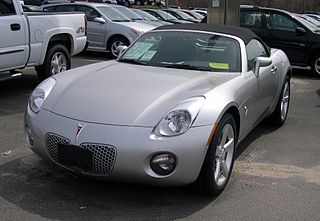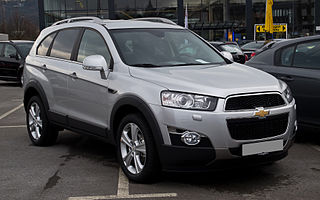Divisions

When General Motors was created in 1908, it started out with Buick and soon after acquired Oldsmobile, Cadillac and Oakland. There were dozens of other smaller companies that William Durant acquired during his first employment term until he was let go due to financially overextending his purchases. He regained control when he brought on Chevrolet in 1917 which was short lived until he was let go for the second time. This meant that the different core brands designed and manufactured their own engines with few interchangeable parts between brands, while sharing chassis, suspension and transmissions.
One of the companies Durant bought in 1909 was the Northway Motor and Manufacturing Company founded by Ralph Northway who had previously supplied engines to Buick, Oakland, Cartercar and other 1900s manufacturers, including V8 engines to Oldsmobile, Oakland and Cadillac when they were independent companies. [1] When Durant bought companies that became part of GM, Northway continued to supply engines to his former clients and added Cadillac, GMC and Oldsmobile to the list, then Northway Motors became the Northway Motor and Manufacturing Division in 1925 and became part of the GM Intercompany Parts Group. [2]
When Fisher Body was bought in 1925, coachwork was shared and with the introduction of the Art and Color Section also in the late 1920, GM products shared appearances. The core items that made each brand unique were the engines. Buick and Chevrolet used overhead valves while Cadillac, Oldsmobile, Oakland used side valve or flathead engines and the divisions no longer outsourced their engines and manufactured them according to particular brand requirements. The original factory location was located at Maybury Grand Avenue, Buchanan Street and the Grand Trunk Railway in Detroit then later became GM truck Plant No. 7 in 1926 to manufacture front and rear axles and parts for past model Chevrolets. Starting around 1925 engine blocks and cylinder heads were now developed at each brand but were cast at Saginaw Metal Casting Operations. [3] In the mid-1960s, there were 8 separate families of GM V8 engines on sale in the USA. [4] [1]
By the 1970s, GM began to see problems with their approach. For instance, four different North American divisions (Chevrolet, Pontiac, Oldsmobile and Buick) offered four completely different versions of a 350 cu in V8 engine - very few parts would interchange between the four designs despite their visual similarities, resulting in confusion for owners who naturally assumed that replacement parts would be usable across brands. In addition to these issues and the obvious overlap in production costs, the cost of certifying so many different engines for tightening worldwide emissions regulations threatened to become very costly.
Thus, by the early 1980s, GM had consolidated its powertrain engineering efforts into a few distinct lines. Generally, North American and European engineering units remained separate, with Australia's Holden and other global divisions borrowing designs from one or the other as needed. GM also worked out sharing agreements with other manufacturers such as Isuzu and Nissan to fill certain gaps in engineering. Similarly, the company also purchased other automotive firms (including Saab and Daewoo), eventually folding their engine designs into the corporate portfolio as well. GM later reorganized its Powertrain Division into GM Global Propulsion Systems, located at 800 N Glenwood Ave in Pontiac, Michigan, [5] which became the GM Global Product Group in March 2020 and is in close proximity to the old location of Pontiac Assembly. [6]
GM's German subsidiary, Opel, relies on a range of three-, four- and six-cylinder gasoline and diesel engines. A survey[ citation needed ] of their range shows a reliance on petrol and diesel four-cylinders, and in 2014, there was only one 3-cylinder engine and one 6 cylinder engine in service in Opel's passenger car range.
In addition to automobile and truck engines, GM produced industrial engines, which were sold by brands such as Detroit Diesel, Allison, and Electro-Motive. Most of these engine designs are unrelated to GM's automotive engines.[ citation needed ]


























